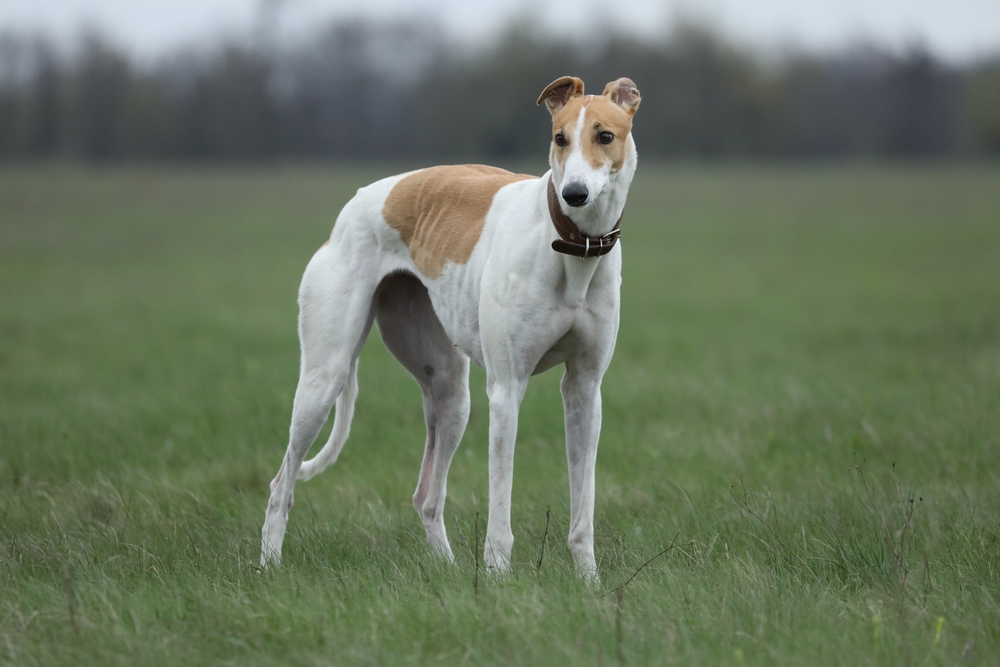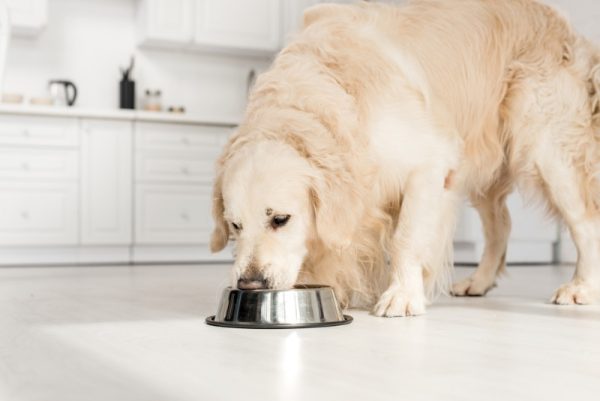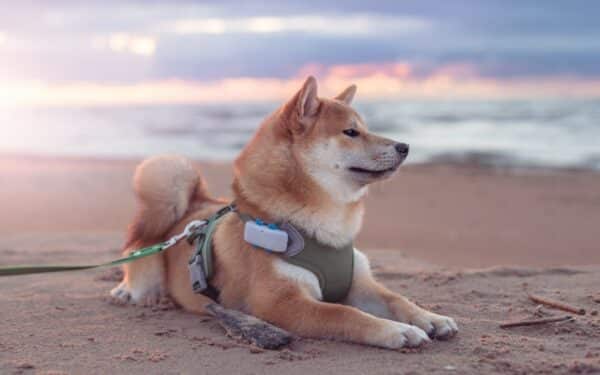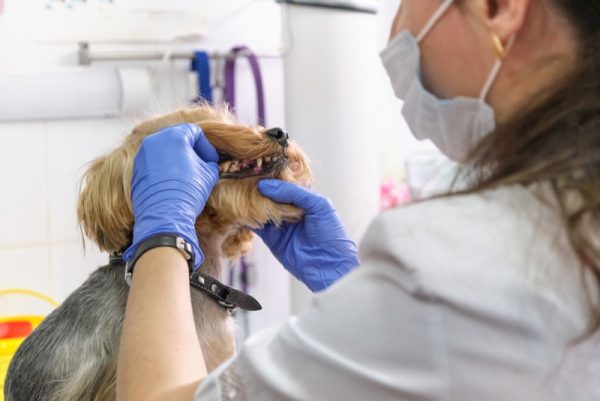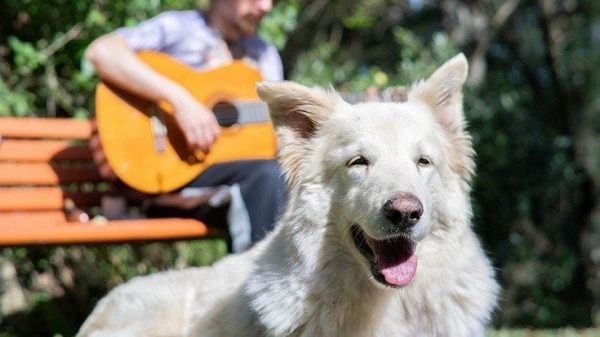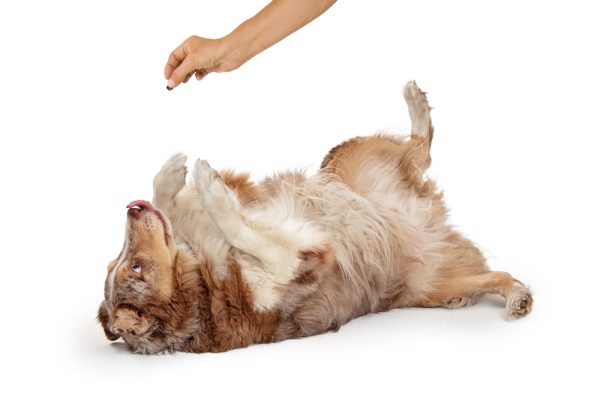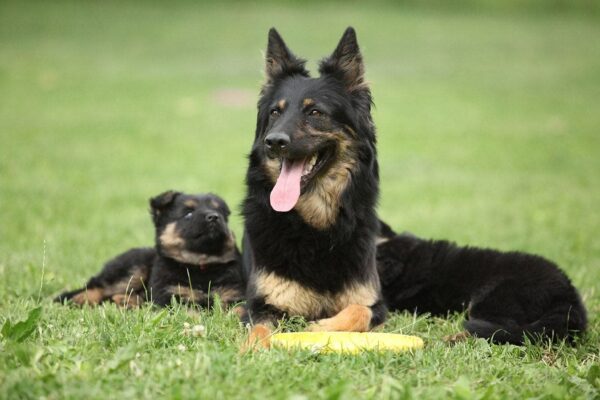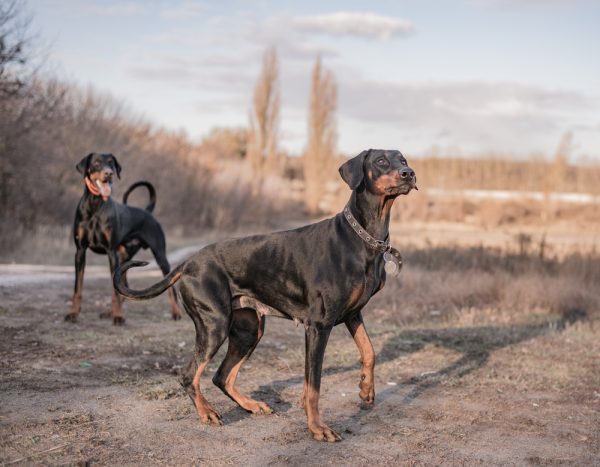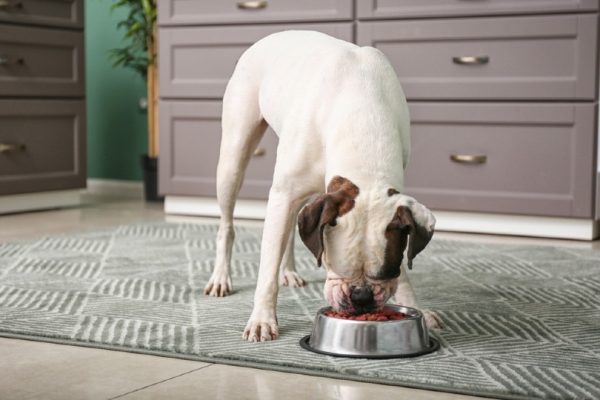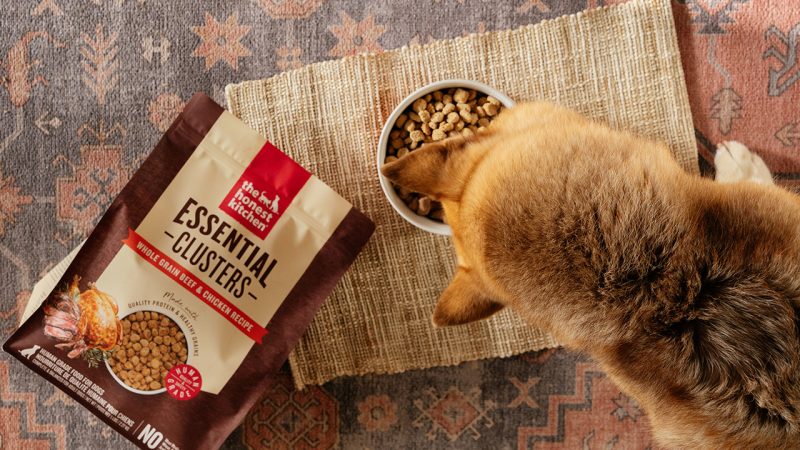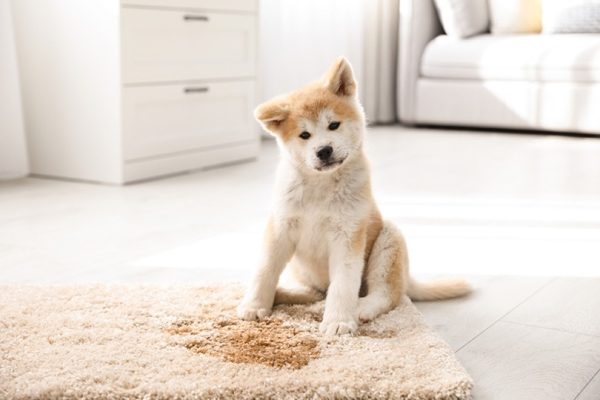In this article
View 8 More +The Greyhound is best known for its incredible speed. They can run at up to 40 miles per hour on average, but this hunter is not built for stamina, and their tendency to spread out and lounge on the sofa has earned them the nickname of the “world’s fastest couch potato.”
Greyhounds are a gentle and sensitive breed, but they do have a very high prey drive. They instinctively chase anything that runs or darts away, so a strong leash and a keen eye are essential facets of Greyhound ownership.
Breed Overview
Height:
27–30 inches
Weight:
60–70 pounds
Lifespan:
10–13 years
Colors:
Variations of black, white, brindle, fawn, red, blue (gray)
Suitable for:
Gentle, calm owners who are looking for a low-maintenance, laid-back companion
Temperament:
Loyal, gentle, sweet, independent, sensitive, lazy
The Greyhound is the fastest dog breed in the world, but only for a few minutes at a time. This turn of pace has seen the breed used for racing events and has, in turn, has seen the breed face considerable mistreatment. When dogs are too old or slow for racing, they may be abandoned or euthanized, and even while they are racing, some are kept in barren kennels with a lack of environmental enrichment.
Potential owners are encouraged to rescue Greyhounds, where possible, and they will be rewarded with a quiet, gentle, and affectionate companion that needs surprisingly little exercise.
However, it can take time to form a relationship with an ex-racing greyhound, as they may have had little socialization and interaction with different humans.
Greyhound Characteristics

Greyhound Puppies
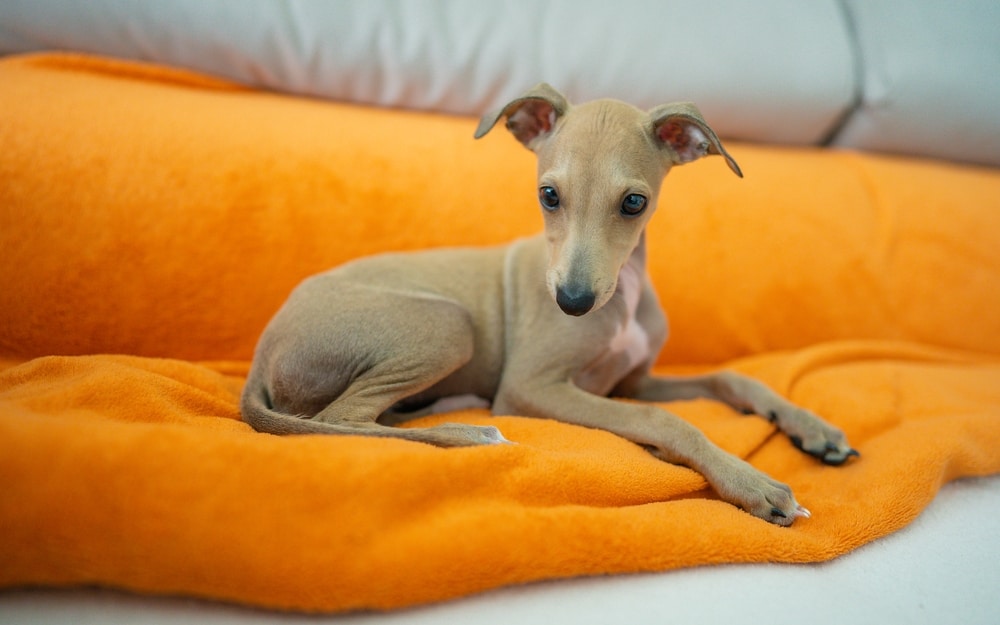
The availability of Greyhounds is strongly linked to the popularity and occurrence of Greyhound races. In the United States, the popularity of Greyhound racing has declined, resulting in fewer breeders, and in some places, fewer Greyhounds up for adoption.
You may have to spend some time looking for breeders. And when you find a potential breeder, take care to ensure that they are reputable. Avoid those that breed racing dogs. Ensure the puppies get some degree of socialization, ideally by being kept in the house rather than a kennel or other outbuilding. When you meet the puppy, they should be alert and inquisitive and should look healthy. Check that the parents were screened and underwent the relevant health checks. The Greyhound Club of America recommends the following health tests:
- Greyhound polyneuropathy (DNA test)
- Cardiac exam
- Evaluation by an ophthalmologist
Greyhounds tend to be friendly and welcoming, but they can be standoffish with strangers. The key to ensuring your Greyhound falls on the friendly side of the spectrum is good, early socialization, which should start when your dog is still a young puppy. As well as plenty of socialization, you should start training your hound as soon as you get them home.
Do consider adopting a Greyhound, rather than buying one. Specialist Greyhound rescue shelters exist, and these often have a steady supply of dogs in need of loving families. When adopting, get as much background as possible from the shelter. Many owners won’t give the full picture when they hand a dog over, but the shelter should at least know how the dog reacts around other dogs, and potentially even cats. They should also know how the dog reacts to people they know and strangers.
Temperament & Intelligence of the Greyhound 🧠
The modern Greyhound got its start in England in the 19th century, and all modern Greyhounds’ lineage can be traced back to a single dog, called King Cob, who was whelped in 1839. However, the Greyhound likely existed way back in Ancient Egyptian times and is considered one of the oldest domesticated breeds. During these times, they were worshiped as gods, and because of this, only royalty were permitted to own Greyhounds. Cleopatra owned Greyhounds, and so, too, did Queen Elizabeth I. General Custer raced his Greyhounds the day before he set off for Little Big Horn.
The modern Greyhound retains its regal temperament. This dog is sleek and beautiful, and this breed isn’t prone to excessive barking or noise-making. In fact, if you provide enough exercise, a pet Greyhound will spend the majority of their day stretched out asleep.
Thanks to their propensity to stretch out and relax, and because they aren’t necessarily a high-energy breed when at home, the Greyhound can adapt to life in an apartment, but owners will need to ensure they get out and have adequate daily exercise.
Bred as a hunter, the Greyhound does have a high prey drive. If they see anything moving quickly away from them, the coursing hound is likely to give chase. This means they will run after squirrels, rabbits, or anything that looks small and potentially furry.
Generally good with strangers, the Greyhound will usually also be good with other dogs on walks if well socialized.
Are These Dogs Good for Families? 🏠
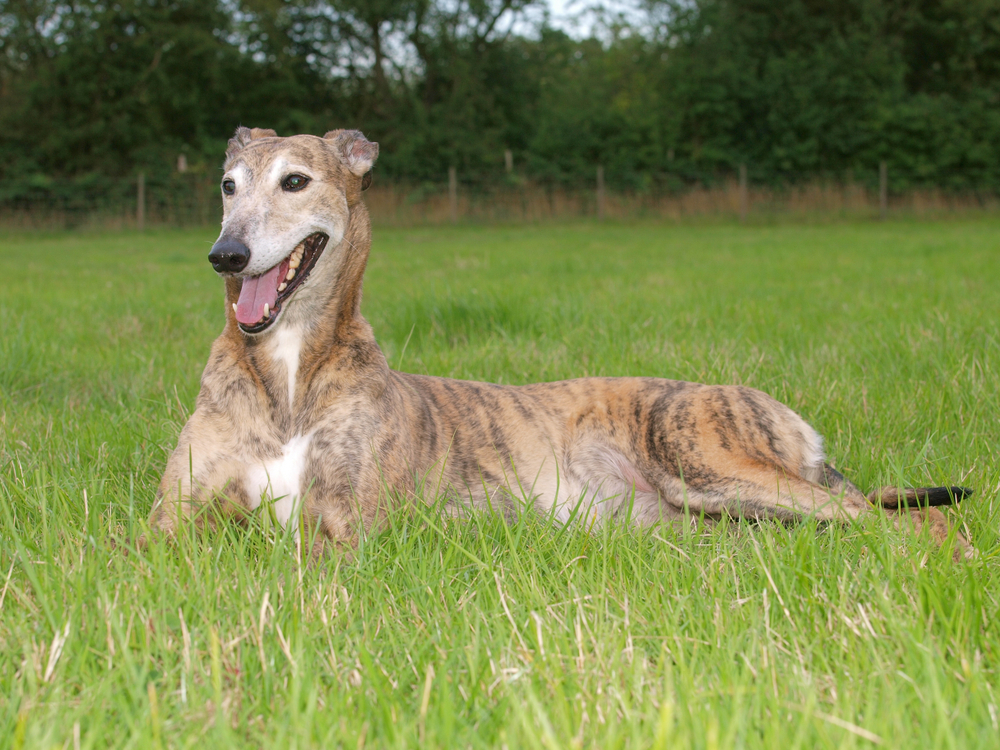
Greyhounds make excellent family pets, although they will try and steal couches and beds for themselves. They have long legs and long necks and snouts, which means they can wriggle and probe into just about any space. Expect to lose your seat to a new pet Greyhound!
Although they are good with children, they don’t like having their naps disturbed and children looking for a playmate may be disappointed, especially if the Greyhound has had its daily sprint.
They are not an aggressive breed but can be quite sensitive and may look for a quiet spot away from the hustle of a loud family house.
Does This Breed Get Along With Other Pets? 🐶 😽
The placid nature of the Greyhound typically extends to other animals. They will get along with dogs in the dog park, but you do need to keep them on a leash because they will chase anything that runs. Yours may even fancy their chances of catching birds as they take off or as they are in flight. At home, keep small animals in their enclosures, unless the Greyhound is behind a closed door. Their turn of pace will catch you unawares, and it could lead to heartache if your hamster or other small furry pet is enjoying the run of the room.
Gradual introductions will be needed if you are introducing a Greyhound to a family cat. They may get along, but if your cat feels threatened and runs away, the Greyhound will give chase. The height and athletic prowess of the breed means that they will be able to clear stair gates, too, so you should use a leash for at least the first few meetings and ensure your cat has somewhere very high up to escape to.

Things to Know When Owning a Greyhound:
This regal dog is adaptable and can live in apartments or homes with small yards, as well as those with bigger gardens. But, you will need to ensure that the garden is securely fenced to prevent your Greyhound from escaping when they attempt to chase small animals.
They are not territorial and are not aggressive, but they can be sensitive. This means they can become anxious in noisy environments or with rambunctious children. And they may become worried if you argue or fight around them, even if it isn’t targeted specifically at the dog. They do better in calm environments and when given space to stretch out.
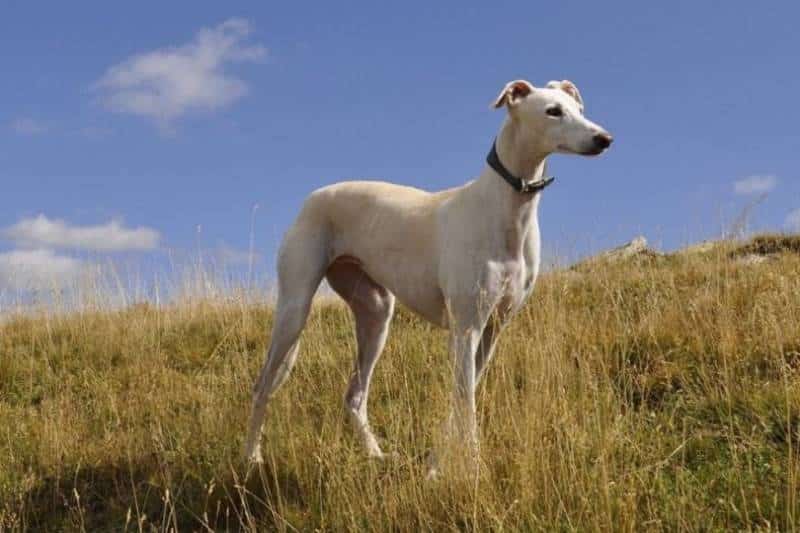
Food & Diet Requirements 🦴
An ideal diet will be a high-quality, complete, and balanced dog food that is suitable for your Greyhound’s life stage (e.g., puppy or adult) and health status. Seek advice on the best choice with your vet, and check that the diet you choose has the Association of American Feed Control Officials (AAFCO) statement on the label that indicates that the food meets the standard nutritional requirements.
When it comes to a feeding regimen, Greyhounds can be prone to bloat, which means they usually are better fed at least twice a day, and make sure not to feed them just before or after exercise. Rescue Greyhounds can be prone to gulping their food down, and you can consider the use of a slow-feeder bowl to encourage them to slow down.
Treats should only make up 10% of your dog’s daily diet, by calories, so be careful when using treats for training or as rewards for good behavior. Always ensure there is a bowl of fresh water out and make sure it is clean and filled at all times.
Greyhounds are meant to be skinny and lithe, and it can take new owners time to get used to this ideal physique. Ensure you aren’t overfeeding because you think your Greyhound is too thin. If in doubt, check with your vet; they will be able to recommend the ideal weight and advise on diet.
Exercise 🐕
Most people’s experience of Greyhounds is seeing them run during races, or at least seeing images of them running. They can reach speeds as high as 45 miles per hour. But they are sprinters rather than stamina-based long-distance runners. This means when they do run, they run hard. Otherwise, they tend to be quite laid back.
Greyhounds require around an hour of exercise a day. Ideally, you will be able to find some way to give your Greyhound some off-leash exercise in an enclosed field or yard rather than always on-leash walking. Although Greyhounds aren’t really designed for stamina, some owners do run or even cycle with their Greyhounds, but you do need to ensure both of your safety.
The breed can do sports such as agility and will certainly excel at any speed-based events. However, they have skinny legs that are prone to injury, so if you take your Greyhound running or to take part in any other activity, ensure you don’t overdo it.
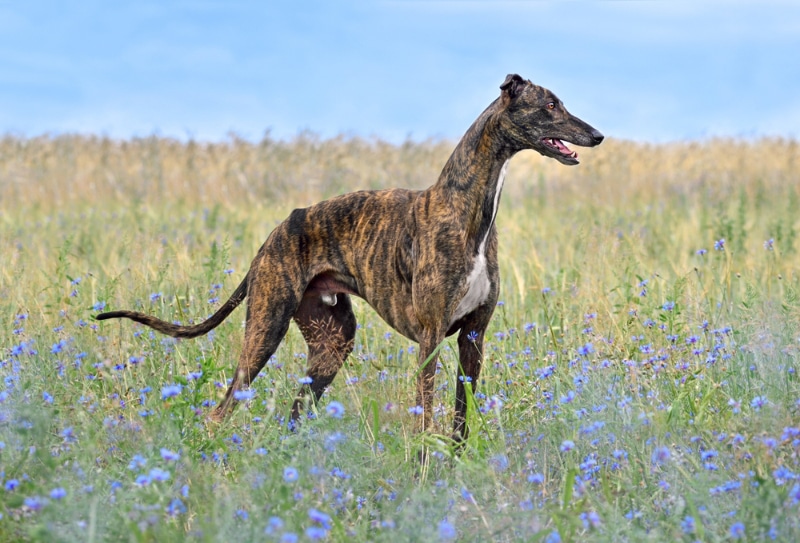
Training 🦮
Socialization is important for this breed. Although this breed is known as a friendly breed that will get along with strangers as well as family, these dogs can be aloof or standoffish with strangers if they haven’t had the appropriate socialization, which should start when your dog is still a puppy.
It is possible to socialize an adult dog, even if they haven’t had any experience with this before, but socializing a puppy will set you and your dog up for a life of happy first meetings. To socialize your dog, make sure they have plenty of positive interactions and experiences with a wide range of people and situations. For example, ensure they get used to cyclists and joggers, people in uniforms, and young children as well as old people. The better socialized your young puppy is, the easier it will be to meet new people and face new challenges later in life.
One way to enhance your young puppy’s socialization is by attending puppy classes. These offer the opportunity to meet people and dogs, and they also teach the basics of training. Training should start as soon as you get your pup home, and it means encouraging and rewarding good behavior.
Grooming ✂️
Grooming requirements for a Greyhound are minimal. They have very short coats that need only occasional brushing. But brushing does help remove dead hairs and also helps keep your dog’s coat clean.
Nails will need regular trimming. They wear down naturally when dogs walk or run on hard surfaces, but this is unlikely to be enough to keep them at an optimal length. If you can hear your dog’s claws clicking while walking on hard surfaces, that is a good indication that it’s time to get the clippers out.
You will also need to brush your dog’s teeth. Aim to brush at least three times a week. Daily brushing is preferred, not only because it helps prevent plaque and tartar buildup but also because it enables you to get into a routine and ensures you don’t forget to brush.
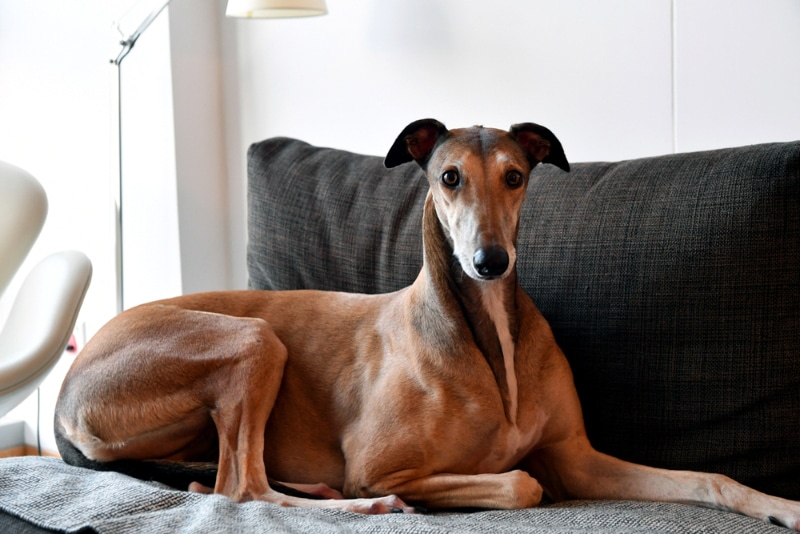
Health and Conditions ❤️
Greyhounds are a generally healthy breed but there are some conditions and illnesses that they are more prone to. These include periodontal (dental) disease, heart disease, progressive retinal atrophy (an eye condition that can lead to blindness), and osteosarcoma (bone cancer).
Corns, which are a circular area of hardened skin that grows on a dog’s pad, are a common cause of lameness in Greyhounds but rarely seen in other breeds.
Like other deep-chested breeds, Greyhounds can be prone to bloat and gastric torsion. This sudden enlargement of the stomach with gas, food, and fluid is sometimes accompanied by twisting and is life-threatening.
If you get your Greyhound from a breeder, the parents should have had the relevant health screens, as we discussed earlier in the article.
- Dental disease
- Corns
- Eye disease
- Gastric Torsion
- Osteosarcoma

Male vs. Female
Male Greyhounds are larger and tend to be more muscular than females. They also tend to be slightly faster than females, although the females still have an incredible speed. Anecdotally, males are more affectionate but may also be more prone to fits of excited, energetic behavior. Females are generally calmer and tend to be more independent.
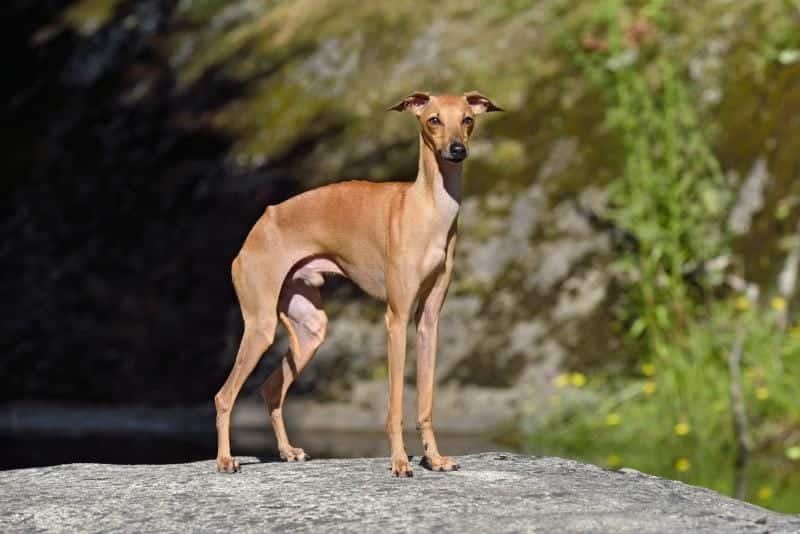

3 Little-Known Facts About the Greyhound
1. They Are Known as the World’s Fastest Couch Potatoes
Greyhounds are sighthounds, which means they hunt prey primarily by sight. They would have traditionally hunted animals including rabbits and squirrels, and their incredible speed and sight led to them being used for coursing events and races. Greyhounds can run at speeds over 40 miles per hour!
They run so fast that when at full speed, they spend three-quarters of their time in the air. Although very fast, when they are not sprinting, Greyhounds love to lounge. They especially enjoy stretching those long legs out on the sofa, earning them the nickname of the “world’s fastest couch potato.”
2. Greyhounds Can Be Independent
Sighthounds are left to look for and hunt prey by themselves, which means they need to be able to operate without instruction. This independence has carried over to the modern Greyhound. So, while they are low maintenance, and they don’t require as much exercise as people believe and tend to have a sweet nature, their independence and high prey drive need to be taken into account when training.
3. They Are the Only Breed Mentioned in the Bible
Dogs are mentioned throughout the Bible, but the Greyhound is the only breed that is mentioned specifically. In Proverbs 30:29-31, three breeds of dog are named as being “stately of stride.” While the other two breeds are not named, the Greyhound is.

Final Thoughts
Greyhounds are a gentle and loving breed. Despite their ability to run at high speeds, they are actually laid-back dogs and don’t need as much exercise as you might think. Rarely aggressive, the Greyhound will get along with strangers as well as family, although early socialization does help ensure this is the case.
They are a sensitive breed though, and they don’t usually enjoy very busy and noisy homes. They also have a very strong prey drive that can get them into trouble if not kept on the leash when outside of a secure area.
While you can buy Greyhounds from breeders, there are plenty of them up for adoption at specialist rescues and shelters, largely thanks to their history as racing dogs.
Featured Image Credit: Haletska Olha, Shutterstock
